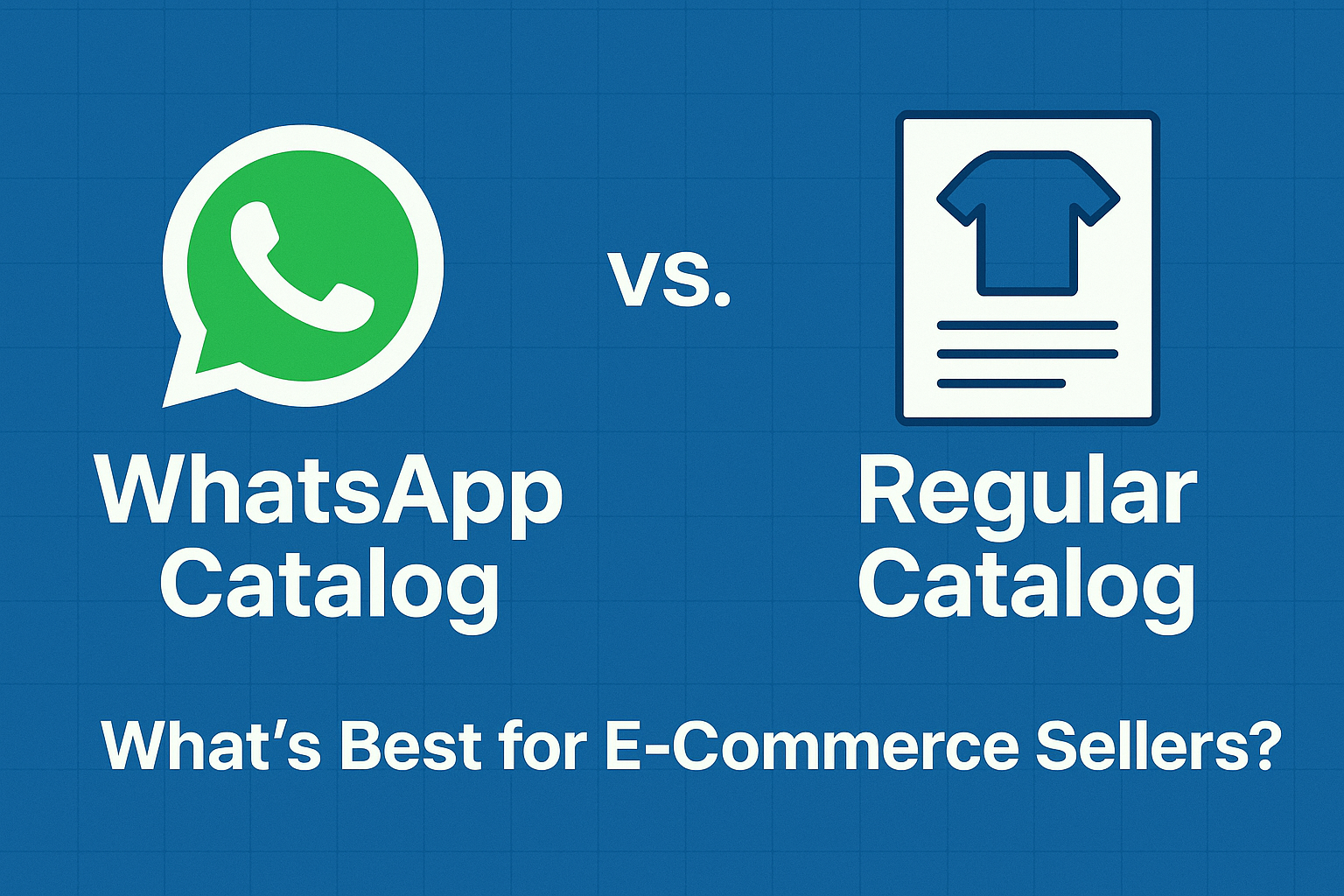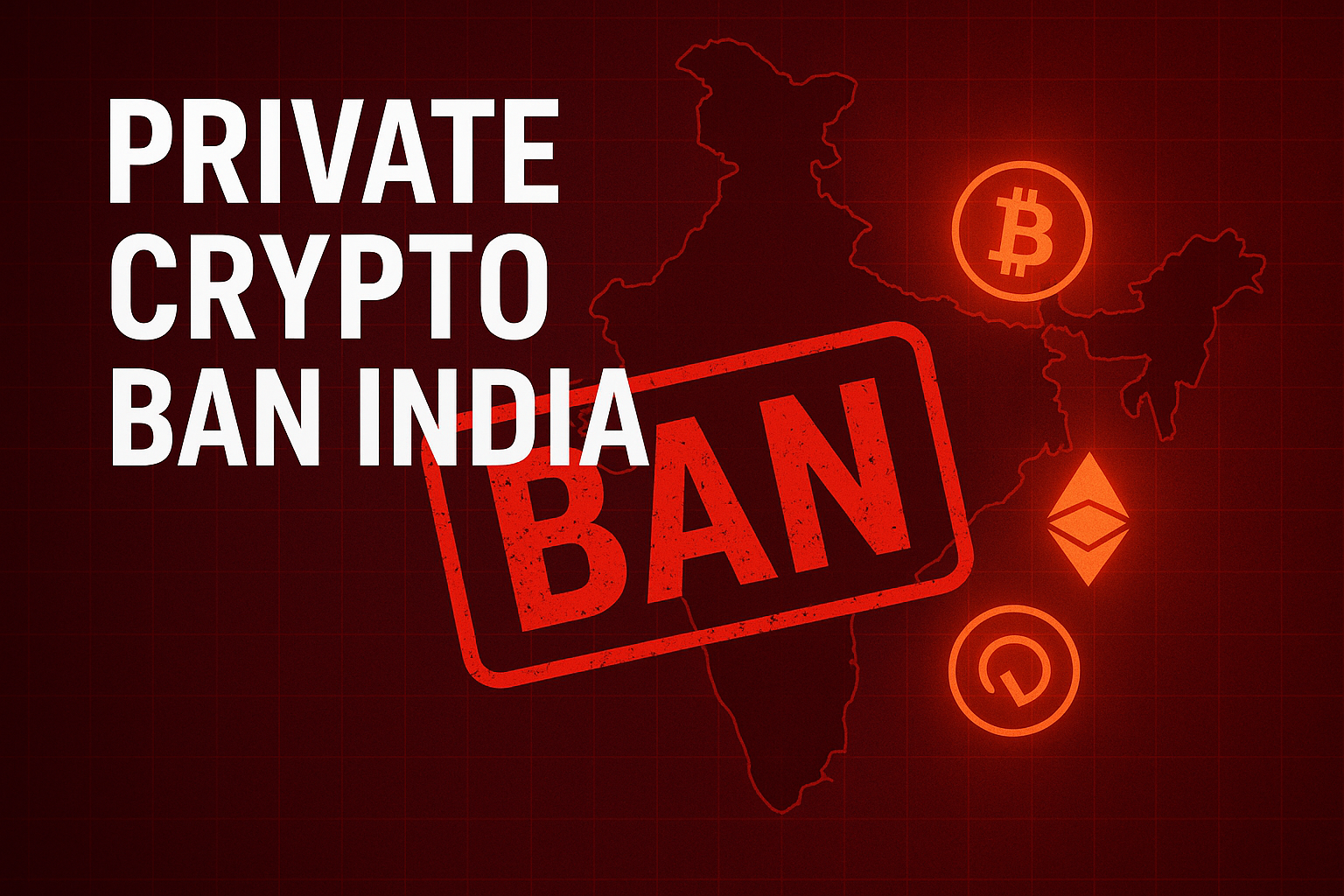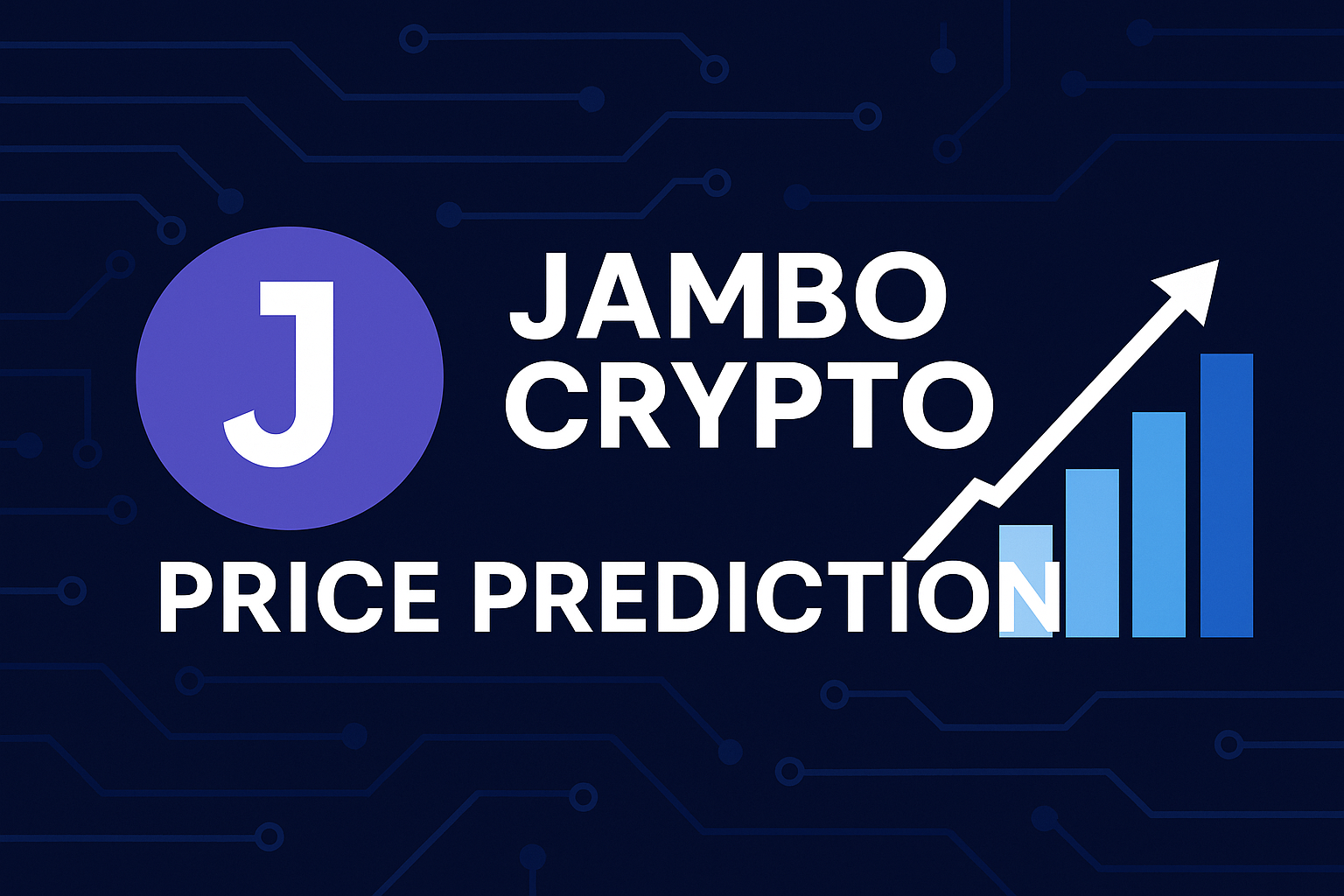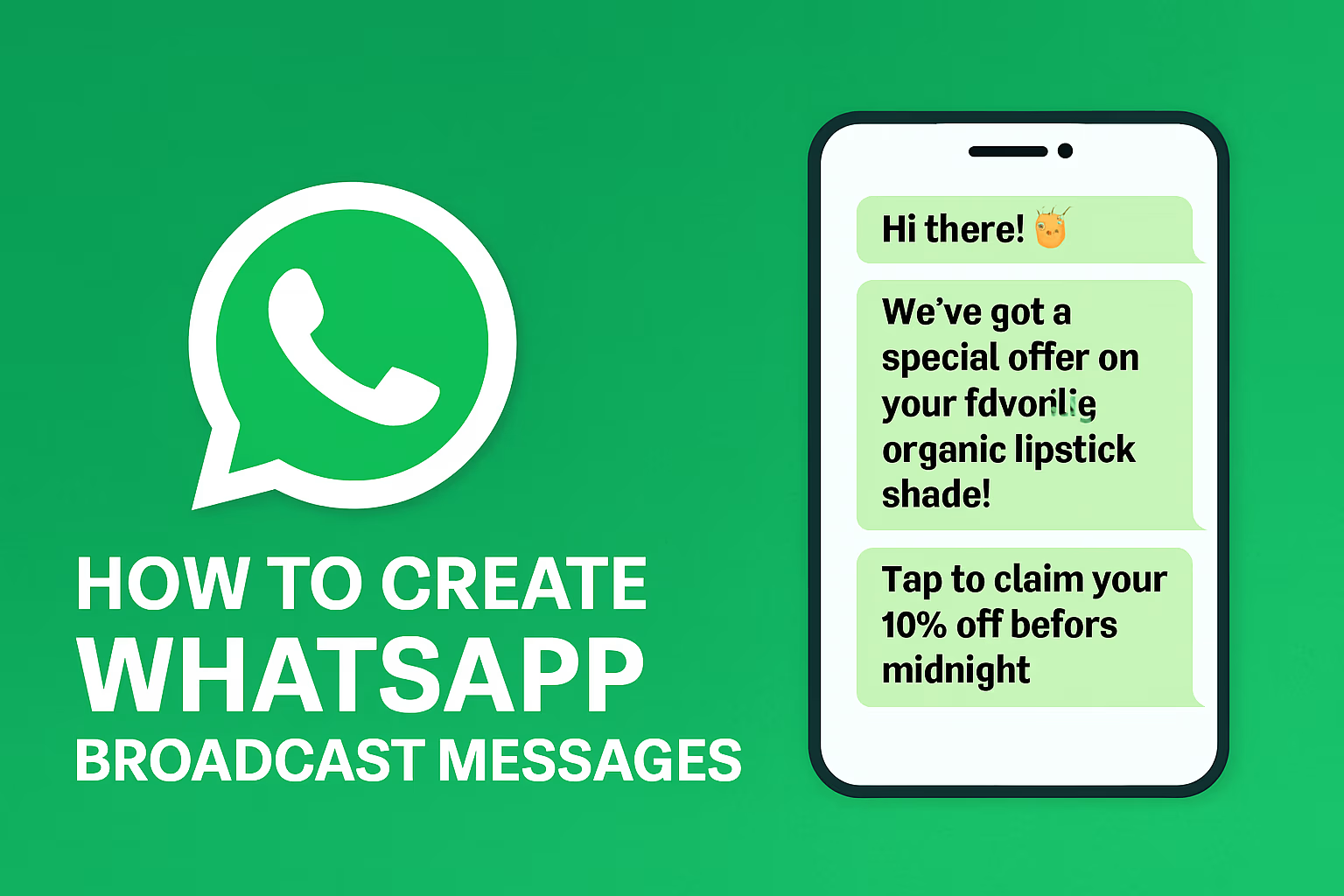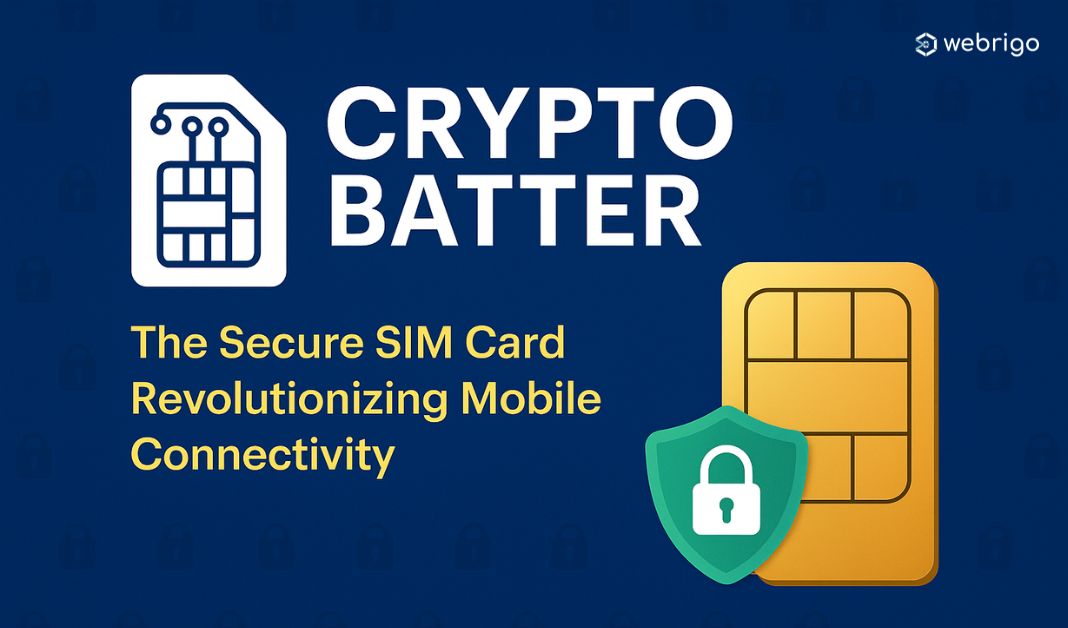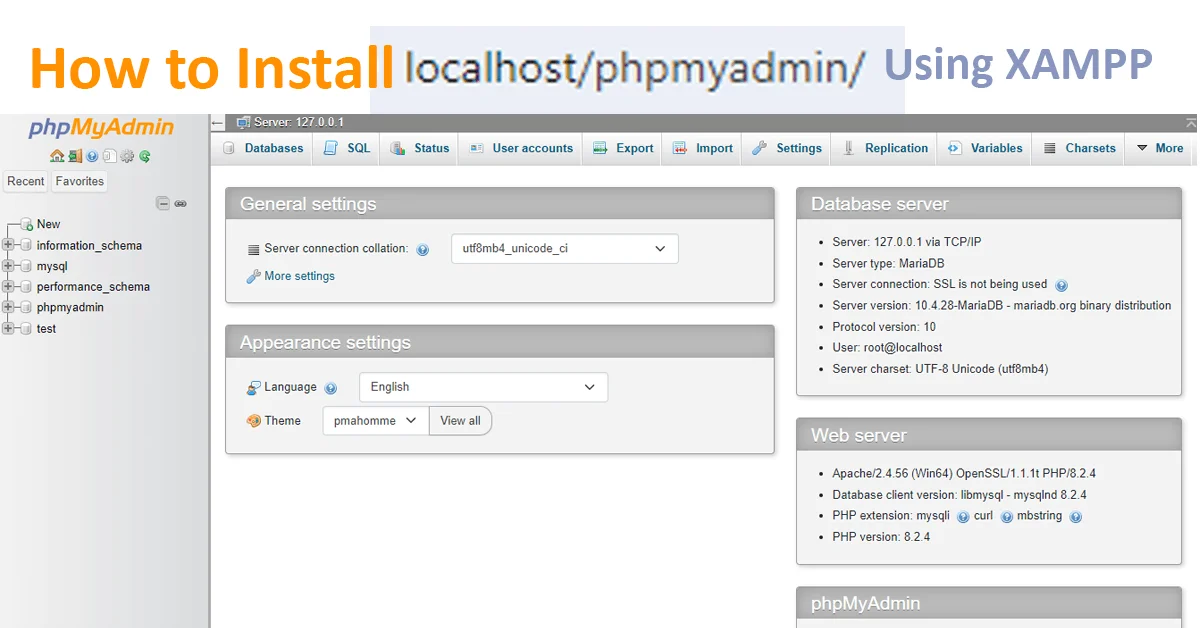Vibe Marketing is a powerful strategy that goes beyond traditional selling. Instead of pushing products, it pulls people in by creating a distinct mood, emotion, or atmosphere around a brand. Think of it as storytelling without saying too much and letting your visuals, tone, music, and presence do the talking. With Gen Z and Millennials leading the demand for authentic, emotionally resonant experiences,
Vibe marketing is no longer optional, it’s essential. If your brand can evoke a feeling, it can build loyalty, community, and culture. In this blog, we’ll explore how vibe marketing works, why it matters, and how to master it.
What Is Vibe Marketing?
Vibe Marketing is a strategy focused on creating emotional, sensory, and cultural resonance with an audience. It’s more about how your brand makes people feel than what it says or sells.
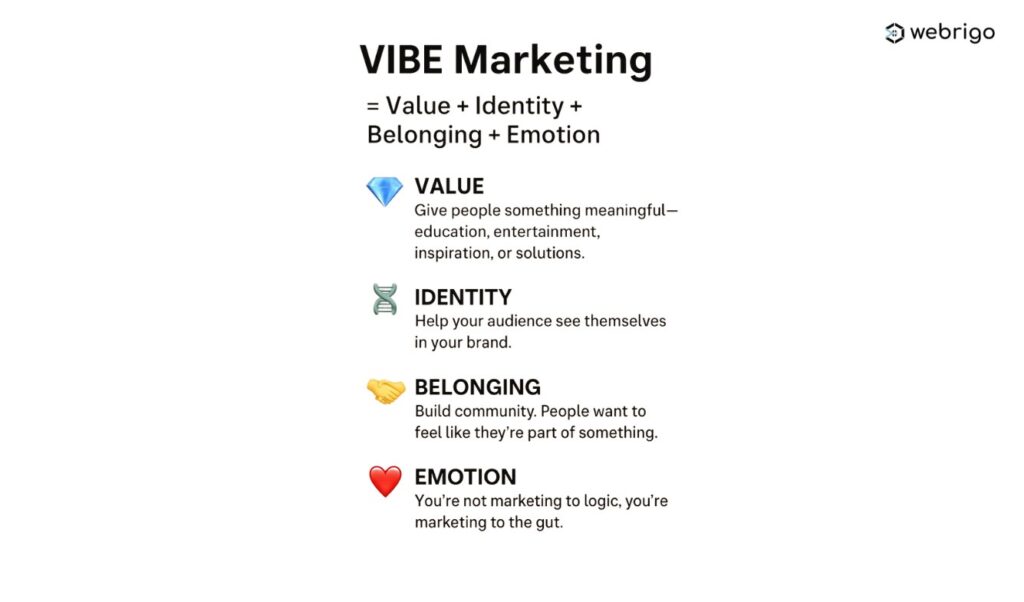
Instead of traditional advertising that touts features and benefits, vibe marketing answers:
- What emotion does your brand evoke?
Think of it as:
- A brand playlist on Spotify
- A cinematic Instagram aesthetic
- A carefully curated mood board that tells your story without words
It’s about creating an immersive atmosphere that resonates with people on a personal level, tapping into shared culture, identity, and the communities your audience belongs to.
Psychology Behind the Vibe Marketing:
Studies show that up to 95% of purchasing choices are influenced by feelings rather than logic. Vibe marketing taps into this by leveraging emotional triggers, aesthetic appeal, and sensory cues like music, color, and tone. It also harnesses the human desire for belonging, aligning brands with cultural identities and communities.
Through emotional contagion, people absorb the mood a brand conveys, forming deeper connections. Ultimately, it’s not about selling a product, it’s about selling a feeling that customers want to experience and associate with their own identity.
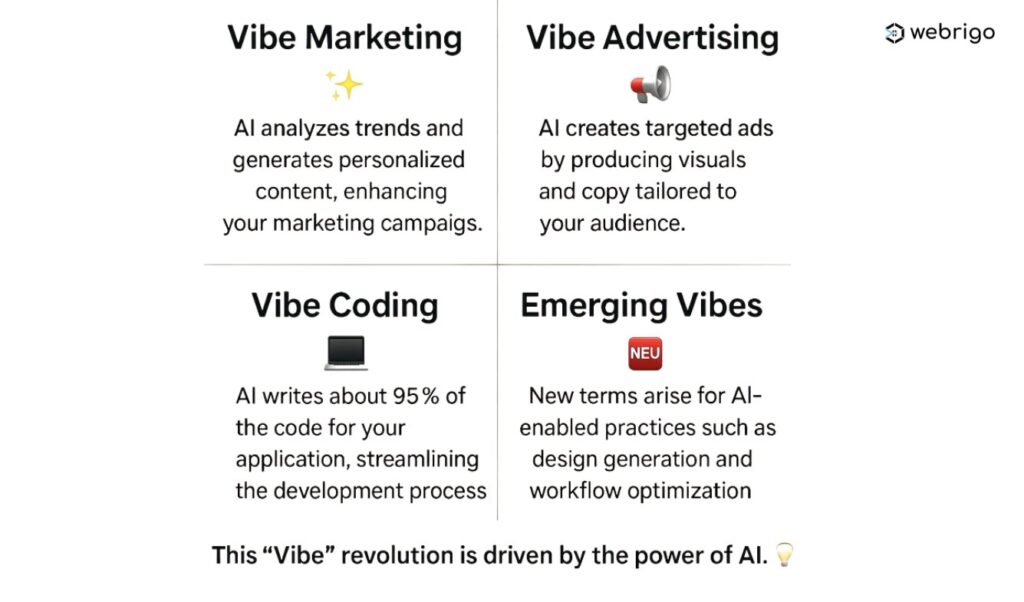
Vibe Marketing leverages:
Vibe Marketing leverages emotion, aesthetics, and cultural relevance to create a strong emotional connection with audiences.
- Emotional contagion: People absorb moods from music, visuals, and storytelling.
- Tribalism: People want to belong to communities that “get” them.
- Neuroscience of Aesthetics: Beautiful design and ambient content can trigger dopamine (the feel-good chemical).
That’s why when you watch an Apple or Nike ad, it doesn’t talk about specs. It sells dreams, rebellion, or purpose.
How Vibe Marketing Differs from Traditional Marketing
Vibe Marketing differs from traditional marketing by prioritizing emotional resonance over direct selling.
| Aspect | Traditional Marketing | Vibe Marketing |
| Focus | Product features, price | Emotion, atmosphere, experience |
| Message | Direct, clear value propositions | Subtle, immersive narratives |
| Content Style | Informative, persuasive | Aesthetic, cinematic, ambient |
| Channels | TV, email, Google Ads | TikTok, Instagram, Spotify, YouTube Shorts |
| Goal | Conversions | Connection & Community |
While traditional methods focus on features and benefits, vibe marketing emphasizes mood, aesthetics, and identity, creating immersive brand experiences that connect with audiences on a deeper, more personal level.
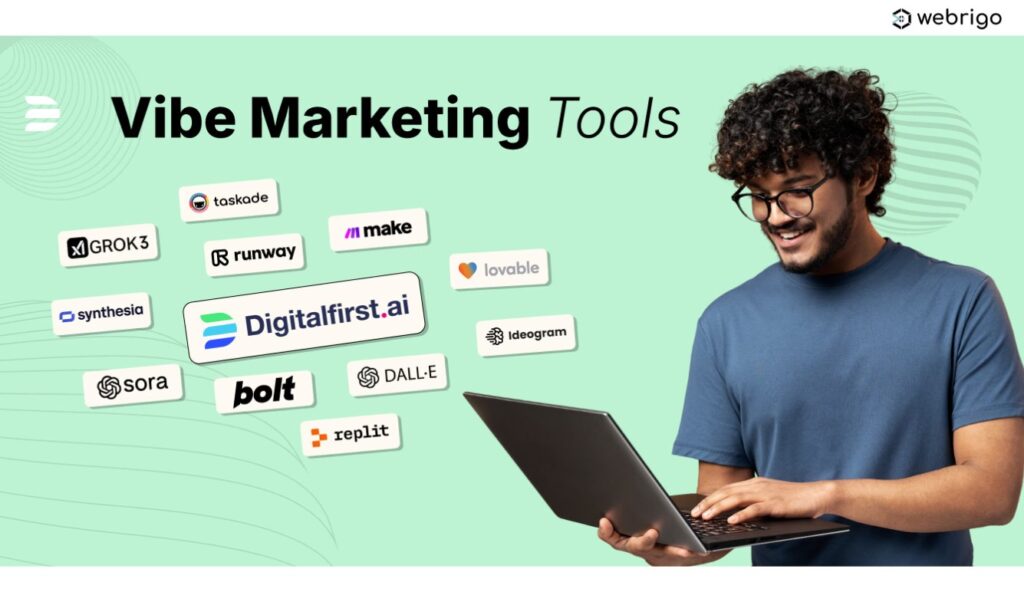
Why Vibe Marketing Works in 2025
In 2025, consumers crave authenticity, emotional connection, and cultural alignment more than ever. With attention spans shrinking and digital noise rising, traditional ads are easily ignored—but a strong vibe cuts through. Platforms like:
- TikTok & Short-Form Content: Trends move faster than ever. Audiences want vibes not ads. TikTok creators sell entire products with facial expressions and a song. Brands that master the vibe, win.
- Gen Z & Millennial Consumers: These generations value authenticity, aesthetics, and alignment with their identity. They sniff out inauthentic marketing in seconds. But they’ll ride for brands that feel like them.
- Creator Economy Influence: Influencers are no longer just promoters. They are mood-setters. Partnering with the right creators helps your brand tap into pre-existing vibes and trust.
It works because it builds community, identity, and trust elements that modern buyers prioritize. In a world of algorithms and automation, brands that feel real win hearts, loyalty, and long-term relevance.
Vibe Marketing in Action: Case Studies
Glossier:
- The Vibe: Minimal, fresh, everyday beauty
- Tactics: Soft pastel visuals, user-generated content, non-hyped messaging
- Result: Cult-like community and brand loyalty
Liquid Death:
- The Vibe: Punk-rock, anti-corporate energy
- Tactics: Aggressive branding, humor, edgy influencer collabs
- Result: $700M valuation for… canned water.
Lo-fi Girl
- The Vibe: Chill, focused, creative solitude
- Tactics: Continuous music streams, animated visuals, no direct advertising
- Result: One of the most beloved online “brands” with millions of engaged listeners.
How to Create Your Own Vibe Marketing Strategy
Creating a powerful vibe marketing strategy means crafting a consistent emotional and sensory experience around your brand. Here’s how to do it step by step:
Define Your Brand’s Core Emotion:
Ask yourself: How should people feel when they interact with your brand?
Choose one or two key emotions, calm, empowered, nostalgic, rebellious, inspired and let them guide all creative decisions.
Develop a Strong Visual & Sonic Identity
Your brand’s look and sound should be instantly recognizable.
- Choose a color palette, fonts, and filters that reflect your vibe
- Use music or sound design that aligns emotionally (e.g., lo-fi, ambient, upbeat)
- Maintain consistency across platforms
Build a Vibe-First Mood Board
Use tools like Pinterest or Canva to create a visual collage that represents your brand’s energy. Include:
- Imagery
- Textures
- Quotes
- Music references
This becomes your creative North Star.
Choose the Right Platforms
Focus on channels where vibes thrive:
- Instagram and Pinterest for aesthetics
- TikTok and YouTube Shorts for short-form emotional storytelling
- Spotify for mood-based playlists
Collaborate with the Right Creators
Find influencers and content creators who naturally embody your vibe. Let them authentically interpret your brand rather than pushing scripted promotions.
Create Immersive Content, Not Just Ads
Use storytelling, behind-the-scenes looks, mood videos, playlists, or daily-life content that expresses your brand’s feeling. Make your audience feel part of something, not sold to.
Be Consistent but Evolving
Keep your emotional tone steady, but let your visuals and trends evolve. Vibe marketing is about staying culturally in tune while remaining true to your emotional core.
By focusing on how your brand makes people feel, you turn casual viewers into loyal followers and products into emotional experiences.

Metrics That Matters in Vibe Marketing:
Unlike traditional marketing, where success is often measured by direct conversions, vibe marketing focuses on emotional engagement, brand perception, and cultural relevance. Here are the key metrics that truly matter:
| KPI | What It Tells You |
| Engagement Rate | Are people connecting with your content? |
| Save & Share Metrics | Is your content resonating? |
| Brand Mentions | Is your vibe becoming part of the culture? |
| Sentiment Analysis | Do people feel positively about you? |
| UGC & Aesthetic Recreation | Are users creating their own content inspired by you? |
When people start copying your style, color scheme, or vibe in their own content. It’s a sign your brand is becoming culturally iconic.
These metrics don’t just track numbers. They track impact. In vibe marketing, success is felt before it’s measured.
Final Thoughts: Webrigo’s Take
We believe marketing is no longer about just visibility. It’s about vibe-ibility.
Brands that tap into the emotional pulse of their audience build lasting relationships. They create not just consumers, but communities. Not just awareness, but atmosphere.
If your brand could be a song, a scent, or a sunrise what would it feel like?
That’s the vibe. And that’s where your marketing begins.
Let’s Build Your Brand Vibe.
Common FAQs on Vibe Marketing
How is vibe marketing different from traditional marketing?
It emphasizes feeling and identity over hard selling, using mood, storytelling, and visuals to engage audiences emotionally.
Why is vibe marketing effective today?
Modern consumers value authenticity and emotional connection, making vibe-driven brands more relatable and culturally relevant in 2025.
Which platforms are best for vibe marketing?
Visual and sensory-rich platforms like TikTok, Instagram, YouTube, and Spotify are ideal for expressing a brand’s vibe.
Can small businesses use vibe marketing?
Absolutely. Even without big budgets, small brands can create emotional impact through consistent mood, tone, and authentic storytelling.


